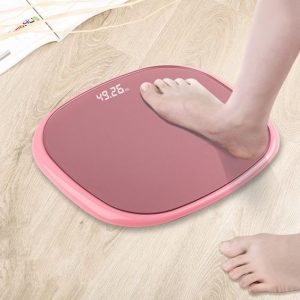How to Help Patients Remain Comfortable in Medical Offices?

Visiting a medical office can induce feelings of stress and discomfort in many individuals. Whether stemming from fear of the unknown, anxiety surrounding medical procedures, or the clinical atmosphere itself, patients often find themselves uneasy during their visits. Nonetheless, medical professionals possess the capacity to alleviate these sentiments and cultivate a more comforting experience for their patients. This article will explore various strategies focused on guaranteeing patients’ comfortable in medical offices.
Table of Contents
Create a Welcoming Environment
The ambiance of a medical office significantly influences patients’ experiences. Crafting a welcoming environment serves to assuage anxiety and foster comfort. Subtle elements like soothing color schemes, cozy seating arrangements, and gentle lighting can have a substantial impact.
Consider integrating natural elements, such as potted plants or scenic artwork, to imbue a tranquil ambiance. Moreover, maintaining a clean, organized waiting area devoid of clutter promotes a sense of serenity and relaxation.
Establish Trust Through Communication
Effective communication lies at the core of building trust between patients and medical professionals. Dedicate ample time to elucidate procedures, treatments, and expectations in clear layman’s terms, ensuring patients grasp the information fully. Encourage patients to pose questions and address any apprehensions they harbor, thereby fostering a collaborative healthcare journey.
Actively listen to patients’ concerns, validating their emotions to exhibit empathy and understanding, thus solidifying the foundation of trust and mutual respect that underpins the patient-provider relationship. This open dialogue cultivates a sense of partnership, empowering patients to actively engage in their healthcare decisions, ultimately leading to improved outcomes and enhanced patient satisfaction.
Respect Privacy and Dignity
Upholding patients’ privacy and dignity stands paramount in cultivating a comfortable medical environment. Ensure confidential discussions are conducted in private settings, shielded from the ears of others. Furnish patients with suitable attire, such as gowns or drapes, to safeguard their modesty during examinations or procedures.
Additionally, remain aware of cultural nuances and religious beliefs that may influence patients’ preferences regarding privacy and modesty. It is imperative to create an inclusive environment that respects individual differences and honors diverse cultural practices and beliefs, thereby ensuring every patient feels valued and respected throughout their medical care journey.
Also Read: The Ramifications of Brexit on the UK Real Estate Arena
Minimize Wait Times
Extended wait times exacerbate feelings of discomfort and frustration among patients, undermining their overall experience. Employing efficient scheduling systems and minimizing delays wherever feasible markedly enhances the patient experience and fosters a sense of respect for their time.
Leveraging technology, such as appointment reminders and online check-in platforms, streamlines the registration process and curtails wait times, demonstrating a commitment to efficiency and patient-centered care. Keeping patients abreast of any delays by furnishing timely updates on anticipated wait times is essential to managing expectations and assuaging anxiety, thereby promoting a more positive and comfortable experience.
Foster a Culture of Empathy
Empathy serves as a potent instrument in healthcare, engendering a profound sense of understanding and support in patients. Encourage medical staff to not only exhibit empathy and compassion but also to embody these qualities in their interactions. Practice active listening, maintaining consistent eye contact, and employing empathetic body language to convey solidarity and unwavering support.
Extend sincere words of encouragement and reassurance to patients, actively acknowledging the unique challenges they confront and wholeheartedly validating their emotions throughout their healthcare journey.
Provide Comfort Measures
Offering comfort measures helps alleviate patients’ physical discomfort during medical procedures. Supply warm blankets or heated examination tables to ensure patients’ comfort. Ensuring the comfort and ergonomics of exam room chairs is essential for enhancing patients’ relaxation and overall experience during medical appointments.
Furnish pillows or cushions for support, particularly catering to individuals with mobility constraints or those undergoing prolonged procedures. Ensure access to adequate pain management options, encompassing medication, relaxation techniques, or therapeutic interventions. Consider providing distractions such as reading materials, televisions, or soothing visuals to divert patients’ attention from discomfort and anxiety.
Conclusion
Patients Comfortable in Medical Offices proves imperative in fostering patient well-being and satisfaction. By prioritizing elements such as communication, empathy, and comfort measures, medical professionals can imbue patients with a greater sense of ease during their visits. Through the implementation of these strategies, medical offices can cultivate a culture of comfort and support, thereby augmenting the overall patient experience.







